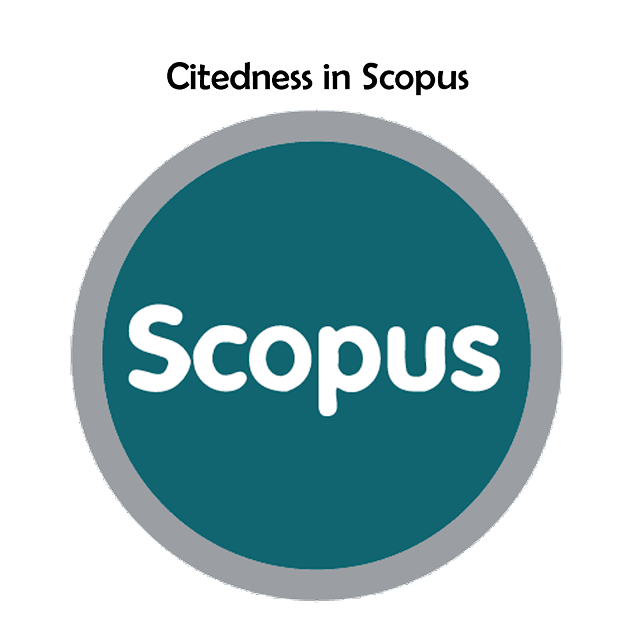Implementation of Data Mining Using K-Means Algorithm for Bicycle Sales Prediction
Ivan Anggriawan(1*); Wawan Gunawan(2);
(1) Universitas Mercu Buana
(2) Universitas Mercu Buana
(*) Corresponding Author
AbstractDuring the pandemic, to reduce the number of Covid-19 spreads, the government imposed social distancing and work from home (WFH) to reduce community activities outside the home. This caused people to have irregular patterns or lifestyles which less any physical activity . It surely can lower immunity system in which can increase the risk of being infected by the virus. Therefore, during the pandemic, sports or exercises become one of the activities that regularly carried out by the community to increase their immunity. One of the sports activities that can be done to maintain their immunity is cycling. Cycling itself is a light activity that can be practiced by all ages. This occasion is certainly a good marketing target for bicycle selling companies, but the company sometimes experiences problems regarding bicycle stocks that do not match with the consumer market target. The purpose of this study is to find out what types of bicycles are on demand by predicting bicycle sales and looking at the desired interests of the community. This study uses the K-Means Clustering algorithm. The results of the K-Means Clustering research are divided into three clusters; Cluster 1 with 209 members with the most interest in mountain bikes, Cluster 2 with 787 members with the most interest in folding bicycles, and Cluster 3 with 540 members with bicycle interests. Most of them are city bicycles, from the clustering process above, the Dunn Index validation (Dunn Index) can be obtained with a value of 0.1324532.
KeywordsBike sales prediction; data mining; k-means; clustering; RStudio
|
Full Text:PDF |
Article MetricsAbstract view: 716 timesPDF view: 241 times |
Digital Object Identifier https://doi.org/10.33096/ilkom.v14i3.1291.284-293 https://doi.org/10.33096/ilkom.v14i3.1291.284-293
|
Cite |
References
R. Komalasari, “Manfaat teknologi informasi dan komunikasi di masa pandemi COVID-19,” Tematik, vol. 7, no. 1, pp. 38–50, 2020, doi: 10.38204/tematik.v7i1.369.
F. K. Hadi, “Aktivitas olahraga bersepeda masyarakat di kabupaten Malang pada masa pandemi COVID-19,” Sport Sci. Educ. J., vol. 1, no. 2, pp. 28–36, 2020, doi: 10.33365/ssej.v1i2.777.
T. Hidayat, M. Hudah, and U. H. Zhannisa, “Survey minat masyarakat untuk olahraga rekreasi bersepeda pada masa pandemi COVID-19 di kabupaten Demak,” J. Phys. Act. Sport., vol. 1, no. 1, pp. 80–88, 2020, doi: 10.53869/jpas.v1i1.17.
W. S. Herlambang.L, “Analisis peramalan penjualan sepeda dan motor listrik di PT XYZ,” J. Comasie, vol. 1, no. 1, pp. 130–138, 2021.
S. Butsianto and N. T. Mayangwulan, “Penerapan data mining untuk prediksi penjualan mobil menggunakan metode K-Means clustering,” J. Nas. Komputasi dan Teknol. Inf., vol. 3, no. 3, pp. 187–201, 2020, doi: 10.32672/jnkti.v3i3.2428.
N. Salsabila, “Klasifikasi barang menggunakan metode clustering K-Means dalam penentuan prediksi stok barang,” Cent. Libr. Maulana Malik Ibrahim State Islam. Univ. Malang, p. 89, 2018, [Online]. Available: http://etheses.uin-malang.ac.id/16985/1/14650031.pdf.
I. Vhallah, S. Sumijan, and J. Santony, “Pengelompokan mahasiswa potensial drop out menggunakan metode clustering K-Means,” J. RESTI (Rekayasa Sist. dan Teknol. Informasi), vol. 2, no. 2, pp. 572–577, 2018, doi: 10.29207/resti.v2i2.308.
W. Gunawan and B. S. P. Diwiryo, “Implementasi algoritma Fuzzy C-Means clustering sistem crowdfunding pada sektor industri kreatif berbasis Web,” J. Edukasi dan Penelit. Inform., vol. 6, no. 2, p. 193, 2020, doi: 10.26418/jp.v6i2.38018.
R. Desrianti and H. D. Wijaya, “Implementasi algoritma Fuzzy C-Means pada aplikasi seleksi karyawan digital talent di PT Telekomunikasi Indonesia,” J. Media …, vol. 4, pp. 879–888, 2020, doi: 10.30865/mib.v4i4.2267.
D. W. Sari, “Penentuan kriteria dalam memilih sekolah dasar dengan menerapkan K-Means clustering ( Studi Kasus : wilayah kecamatan Mampang ),” vol. 29, no. 2, pp. 24–28.
W. Utomo, “The comparison of K-Means and K-Medoids algorithms for clustering the spread of the covid-19 outbreak in Indonesia,” Ilk. J. Ilm., vol. 13, no. 1, pp. 31–35, 2021, doi: 10.33096/ilkom.v13i1.763.31-35.
K. Handoko, “Penerapan data mining dalam meningkatkan mutu pembelajaran pada instansi perguruan tinggi menggunakan metode K-Means clustering (Studi Kasus di program studi TKJ Akademi Komunitas Solok Selatan),” J. Teknol. dan Sist. Inf., vol. 02, no. 03, pp. 31–40, 2016, [Online]. Available: http://teknosi.fti.unand.id/index.php/teknosi/article/view/70.
R. NOVIANTO, “Penerapan data mining menggunakan algoritma K-Means clustering untuk menganalisa bisnis perusahaan asuransi,” JATISI (Jurnal Tek. Inform. dan Sist. Informasi), vol. 6, no. 1, pp. 85–95, 2019, doi: 10.35957/jatisi.v6i1.150.
B. Aditya, Topic Modelling pada Data Artikel Peneliti Penerima Dana PDUPT Menggunakan Gensim. 2021.
C. Algoritma, A. Carolina, K. Ade, and K. Kunci, “Penerapan data mining dengan menggunakan algoritma C4.5 pada klasifikasi fasilitas kesehatan provinsi di Indonesia,” J. Ilm. Komputasi, vol. 19, no. 1, pp. 27–38, 2020, doi: 10.32409/jikstik.19.1.153.
Refbacks
- There are currently no refbacks.
Copyright (c) 2022 ivan anggriawan anggriawan, Wawan Gunawan Gunawan

This work is licensed under a Creative Commons Attribution-ShareAlike 4.0 International License.







